
- Gold and crude oil are benefitting and helping to fuel a higher inflationary environment
- Continued US economic strength has markets are questioning whether the Fed needs to cut interest rates aggressively this cycle
- The Fed signaled last month that it rates may decline over 250 basis points this cycle
The overview
It’s not just fundamentals and technicals driving the rally across large parts of the commodity complex right now but also a collective rethink from traders about what more than 250 basis points worth of rate cuts from the Federal Reserve this cycle will mean for the long-term global inflation trajectory.
Unless confidence is restored that the Fed will be able to achieve its inflation target on a sustainable basis, it points to an environment where commodity prices may continue to outperform.
Crude and gold are two commodities that sit at the epicentre of the debate.
The background
The US economy continues to deliver positive surprises, as demonstrated by last Friday’s blowout non-farm payrolls report which revealed a big increase in employment, higher labour force participation, lower unemployment and another solid increase in employee earnings.
With demand continuing to exceed what the economy can supply, it should come as no surprise we’re seeing jobs numbers like this, nor inflation uncomfortably above the Fed’s 2% target. Even with the rapid increase in rates the Fed delivered over the past two years, the economy continues to chug along nicely, in part because of strong population growth and record non-crisis era budget deficits.
Evidence is accumulating that rate cuts from the Fed may not be needed this year, seeing market pricing slashed to just two cuts from more than seven earlier in the year.
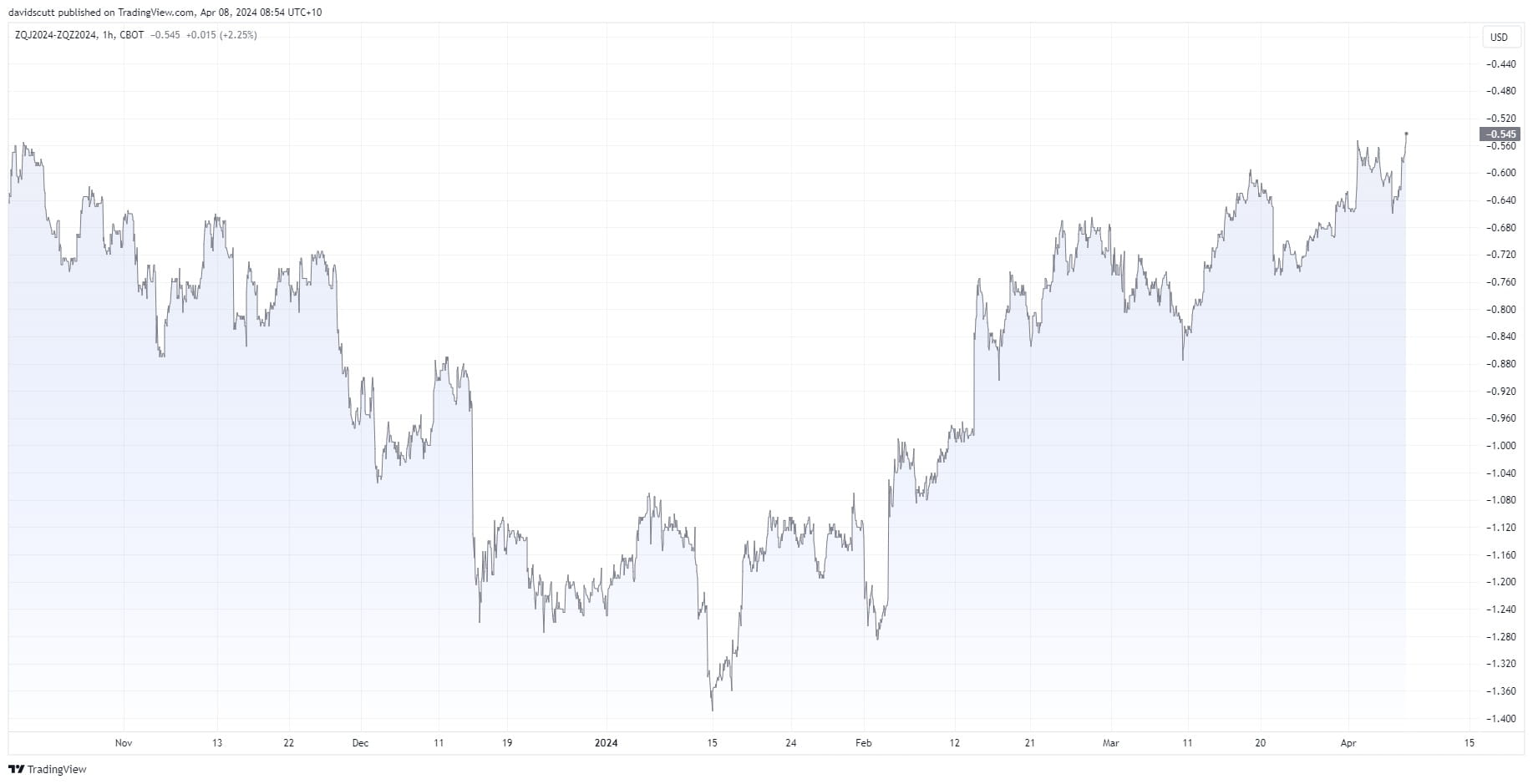
Despite the significant rates recalibration, long-term market-based inflation expectations continue to increase with average rates over the next five (blue line) and 10-years (black line) sitting at 2.43% and 2.38% respectively, according to inflation swaps, well above the Fed’s 2% mandate and moving further away.
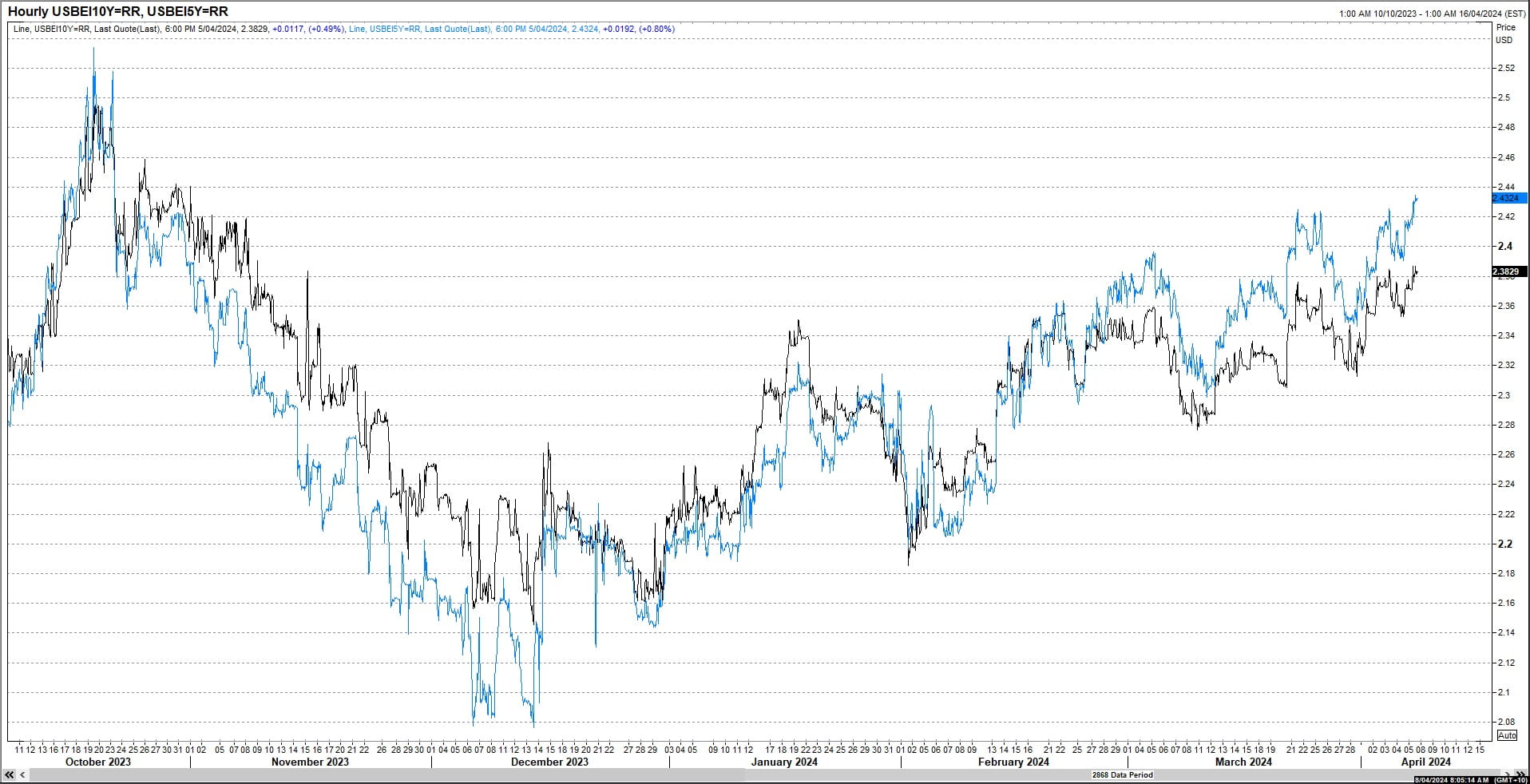
Source: Refinitiv
While higher commodity prices have boosted inflation expectations, as has tentative evidence that China’s economy may be slowly turning around, it’s arguable the bigger factor is how many interest rate cuts the Fed is signalling over the entire economic cycle, not just this year.
As indicated on the Fed’s economic projections in March, the median long-run Fed funds rate estimate from the FOMC is just 2.6%, more than 250 basis points below the current funds rate target range of 5.25-5.5%.
That’s important.
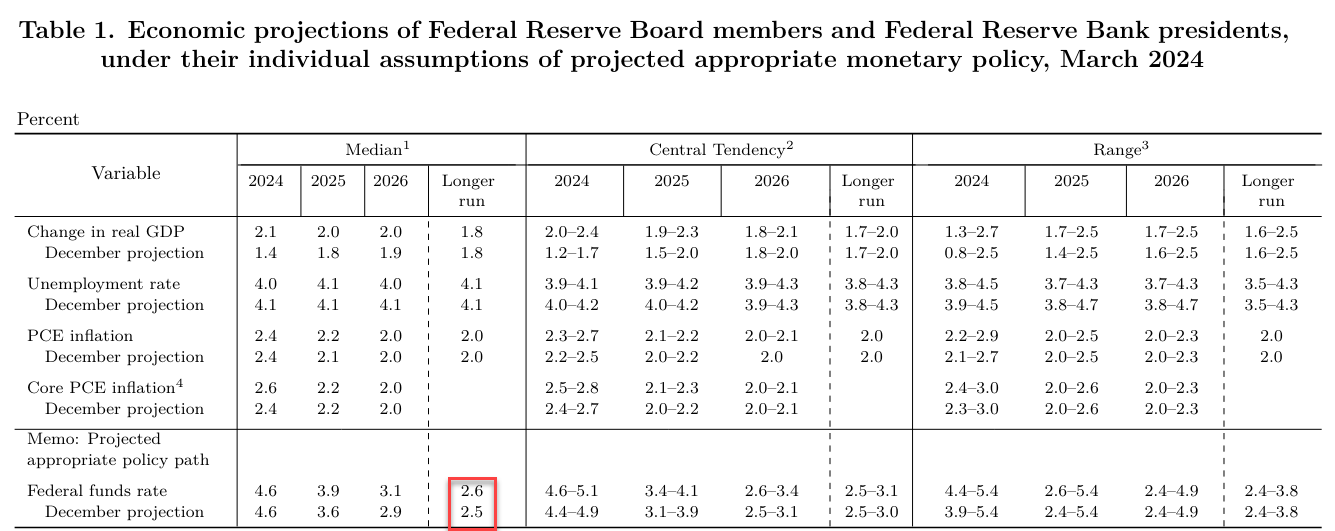
Source: Federal Reserve
Think of the long-run estimate as the level the Fed thinks policy settings will keep inflation and unemployment steady. And then look at how the economy is faring with the Funds rate at multi-decade highs.
With easing of such magnitude, there’s concern slashing rates to those levels could be far too stimulatory to bring inflation back to acceptable levels, helping explain why so many inflation hedges and hard assets are running hot.
Markets fear the Fed is wrong on the scale of cuts it will need to deliver, combining with fundamentals and technicals to place a rocket under commodity prices.
The trade setup
Gold and crude oil may have opened the trading week softer as hedges protecting against an escalation of geopolitics tensions over the weekend were unwound. However, the underlying factors contributing to their relentless run higher remain in place, pointing to the likelihood that any weakness may be short-lived.
For crude, supply discipline from OPEC-aligned producers and resilient demand continues to tighten market conditions, underpinning price gains. Geopolitical risks are also extremely elevated in the Middle East. The latter is also a positive factor for gold, as are concerns it may be inflation that remains higher for longer, not rates. Prior underinvestment in gold production is another factor contributing to higher prices.
As such, dip buying remains the preferred strategy until geopolitical tensions in the Middle East ease significantly or the Federal Reserve and/or incoming data address growing unease over US inflation outlook.
Crude oil
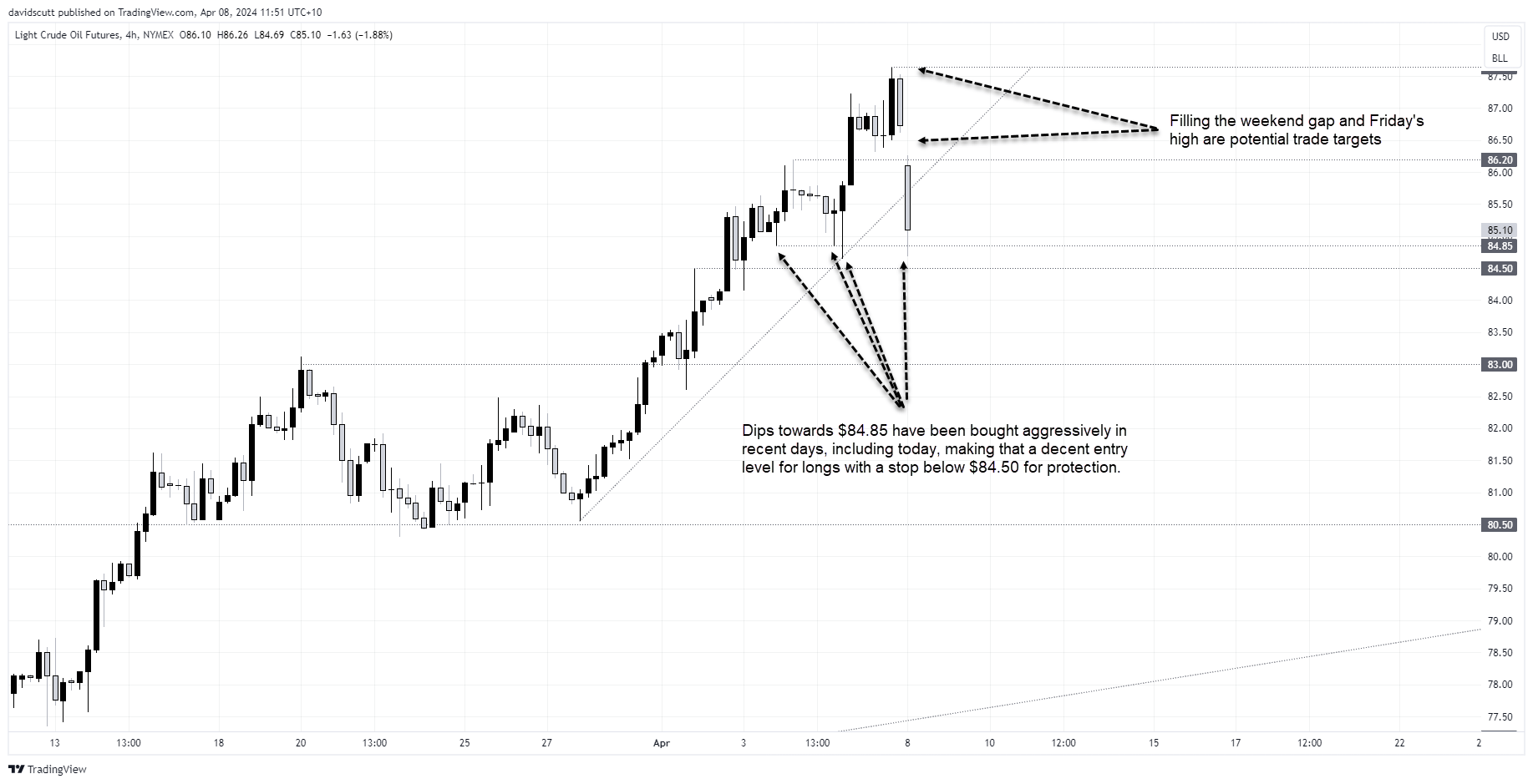
Crude has pulled back sharply in early Asian trade as geopolitical hedges put in place over the weekend have been unwound, combining with overbought conditions to spark a decline of more than 2%. Having broken the minor uptrend dating back to late March, the next downside level is $84.85.
Dips towards $84.85 were bought aggressively last week with the price bouncing from that level again today, making it a decent entry point for longs with a stop below minor support at $84.50 for protection. The initial target would be filling the gap left over the weekend, so around $86.60. Beyond, Friday’s high of $87.64 would be in sight.
Gold
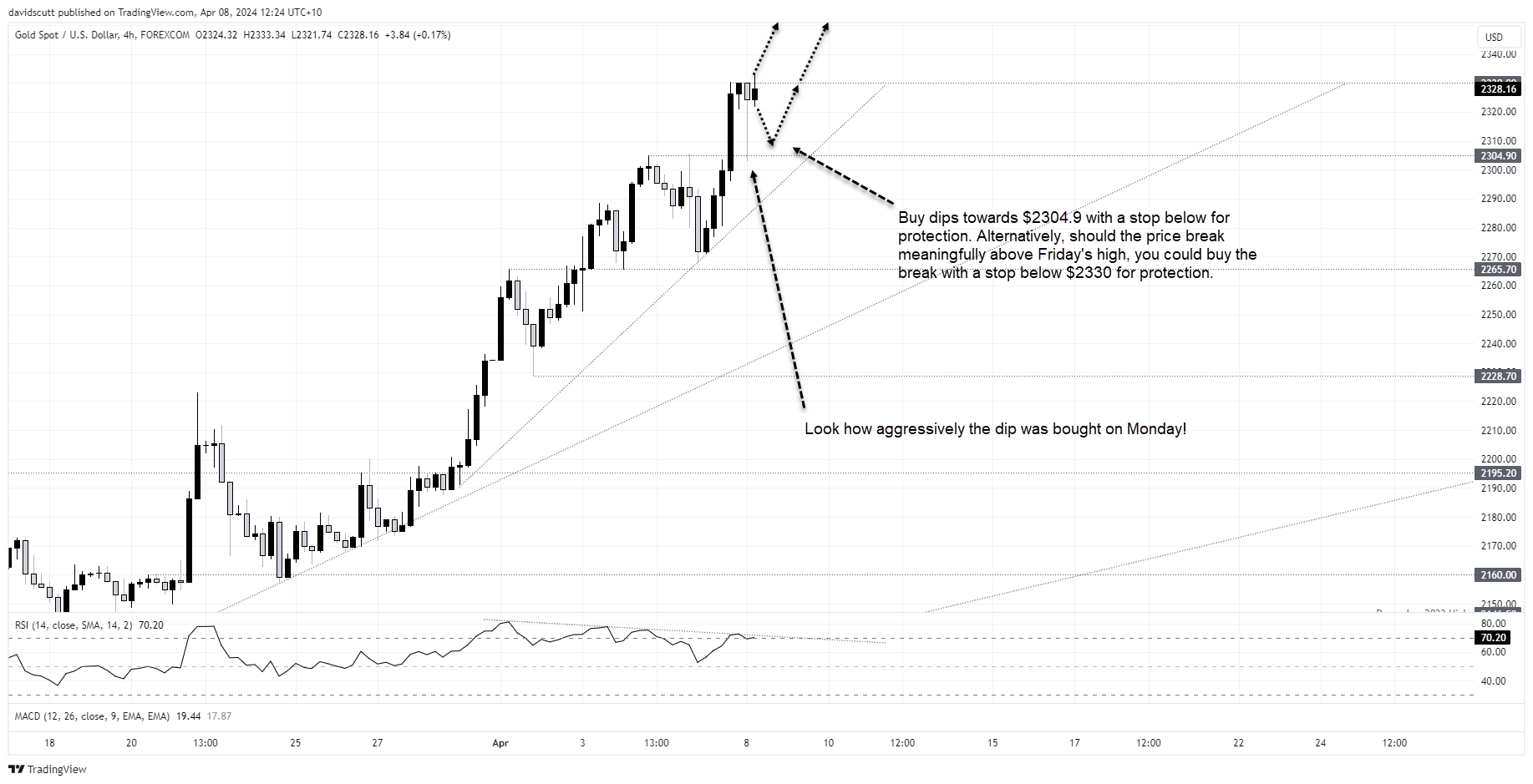
Gold’s retracement in early Asian trade didn’t last long with the price bouncing aggressively from support at $2304.90. That would have been the entry point for longs, with a stop below, but the price has simply moved too quickly to get this note out in time.
If the price were to get back there, there’s one potential trade idea. Alternatively, given how rapid the rebound has been, traders could consider buying a break of the record highs above $2330 with a stop below for protection.
The wildcards
As mentioned above, geopolitics and sentiment towards the US interest rate outlook are key factors to consider when trading crude and gold right now, making the US CPI and PPI reports important this week.
On the US outlook, you can make the case for upside for crude and gold regardless of how the inflation reports print – further upside surprises may help fuel inflation concerns, especially if Fed commentary continues to signal rate cuts are likely later in the year, while an undershoot may act to soften the US dollar, an outcome that usually benefits commodity prices.
Therefore, the biggest swing factor may be developments on the geopolitical front.
-- Written by David Scutt
Follow David on Twitter @scutty
How to trade with City Index
You can trade with City Index by following these four easy steps:
-
Open an account, or log in if you’re already a customer
• Open an account in the UK
• Open an account in Australia
• Open an account in Singapore
- Search for the market you want to trade in our award-winning platform
- Choose your position and size, and your stop and limit levels
- Place the trade





